Swiss chard (also called chard, spinach beet, leaf beet, seakale beet, silverbeet, or white beet) is a green superfood, basically, a vegetable with beet-like-looking leaves, the flavor reminds beet leaves and spinach.
What is the best substitute for Swiss chard? The best substitutes for Swiss chard include spinach, a lot of greens (mustard greens, beet greens, kohlrabi greens, pumpkin greens, turnip greens, dark leafy greens), kale, bok choy, and some other plants. All substitutes have similar health benefits and flavors and can replace chard 1:1.
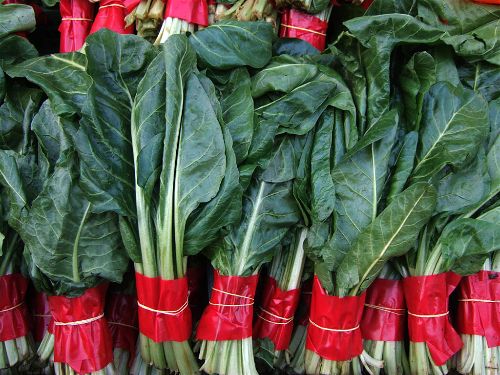
What a Swiss Chard is?
There are different varieties of Swiss Chard:
- red chard or ruby chard – green leaves and red stalks. This variety is more tender and flavorful than green chard.
- green or also called white chard,
- yellow
- mixed variety called Rainbow chard. The wide leaves taste much like spinach, but the edible stems taste more like celery. The stems need a little more cooking time than the leaves, so slice them off where the stems meet the leaves and add them to the recipe a bit sooner.
Swiss chard is used in many dishes and it can be served as it is, simply sautéed in olive oil. The texture of leaves is heavy and this is why they often need to be cooked longer.
As I mentioned the taste can remind beets, spinach, kale – the flavor is a bit bitter, slightly earthy. The chard stem is sweeter than leaves.
The fresh Swiss chard is tender and crunchy, but never soft. Chard becomes softer when it is cooked.
Recipes with Swiss Chard
Mostly Swiss chard is served as a great side dish, sauteed with spices and oil. The best way to cook Swiss chard is steaming, but it can also be sautéed, blanched, braised, or roasted.
If you’re using chard in the recipes, I guess these equivalents may be very helpful:
- 1 lb swiss chard = 4 cups stems + 5-6 cups leaves
- 1 cup Swiss chard leaves = 36 grams
Best Swiss Chard Recipes
- Swiss chard sauteed in olive oil, salt, and garlic.
- Creamed Swiss chard – perfect with steaks or bacon. Can work as a substitute for creamy spinach.
- Savory Roasted Seitan and Swiss chard roasted with garlic, olive oil, and seasoning.
- Salads with chard. For salads usually use rainbow chard as it looks beautiful and colorful on the plate. Eating a lot of greens is very healthy for gut cleansing and the immune system.
- Mediterranean pie made with layers of puff pastry, Swiss chard, eggs, ricotta, cream, and marjoram.
- Vegetarian cakes made with quinoa, millet, barley, eggs, cheddar cheese, Swiss chard, garlic, and shallot.
- You can add Swiss chard to pasta or gnocchi – the best way to add the chard to four cheese pasta.
- Healthy smoothie with Swiss chard. The simplest one is banana + swiss chard.
Health benefits
Swiss chard is a superfood, full of vitamins and minerals and very low in calories. 1/2 cup of cooked Swiss chard contains only 18 calories, while 1 cup of raw chard contains only 7 cal.!
Swiss chard is rich in calcium, magnesium, potassium phosphorus, and also contains a little bit of iron. Plus, it is stuffed with vitamins: vitamin C, A, K, and vitamin E.
Including greens in your diet can lower heart disease risk factors, lower cholesterol and high blood pressure, as well as help your digestive system evacuate leftovers.
14 Substitutes for Swiss chard
The closest substitute for Swiss chard are beet greens, but also spinach and dark leafy greens. The cooked Swiss chard reminds bok choy or kale.
Usually, we can come up with 5-6 alternatives in case we don’t have Swiss chard, but I summed up 14 substitutes for Swiss chard, some of them much more accessible, some of them are more exotic.
Substitute for Swiss chard list:
- Mature spinach
- Spinach
- Mustard greens
- Beet greens
- Kohlrabi greens
- Pumpkin leaves/greens
- Turnip greens
- Cavalo Nero (Black Tuscan) kale
- Large bok choy
- Collard
- Calalou
- Rapini
- Kale
- Escarole

Both leaves and stem of Swiss chard are edible, but in fact, these greens are not available everywhere. If you want to replace chard, try the most similar greens like beet leaves, collards, spinach, kale or bok choy.
In general, a lot of greens, as you’ll see, can substitute Swiss chard in in 1:1 ratio.
Mature spinach
Mature spinach has larger leaves and thick blade and it is almost the same as Swiss chard for cooking:
- you can use both leaves and stems
- the way of cooking are the same
- if you use mature spinach instead of Swiss chard you won’t even notice it, as mature spinach doesn’t have earthy flavor and has very mild taste.
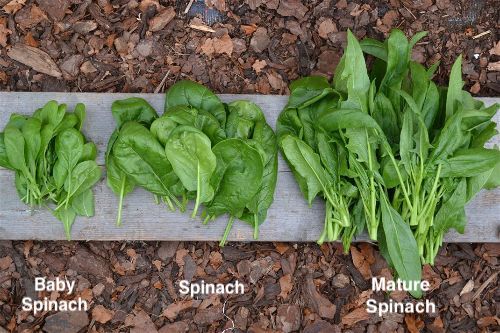
Spinach
Spinach has almost the same characteristics and flavor as Swiss chard which makes spinach one of the best and easy to find substitutes. I need to say, that Swiss chard seems to be more tender, but if you will find young spinach, it will be more tender.
Spinach is a green vegetable that you can eat raw or cook. We mostly use sauteed spinach with breakfast, pasta, salads, and smoothies. Raw spinach is best for smoothies. Baby spinach is sweeter than regular spinach.
Spinach as well as Swiss chard is a good source of fiber and Vitamins.
While cooking, make sure you think of these equivalents:
- 1 pound fresh spinach = 1 cup cooked = 5 ounces frozen.
Mustard greens
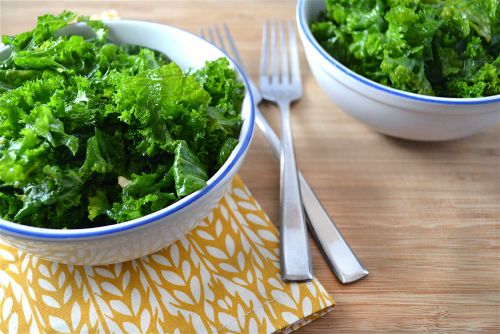
Mustard green has a dark green leaf and colorful stalks – just like Swiss chard. Mustard greens have a stronger pepper taste (it is mustard, right?) than Swiss chard, the texture is good for salads and sauces.
These are more popular in the South than in the rest of the country. There are red and green varieties, and both have a peppery bite. If the greens are too pungent for your taste, you can tame them by blanching them in salted water.
Same as Swiss chard, mustard greens are good for health and rich in vitamins.
Mustard greens are also called vegetable mustard, Oriental mustard, Indian mustard, Chinese mustard.
Note, that there are several varieties of Mustard greens:
- leafy mustard greens – closest to Swiss chard
- Leaf mustard – reminds baby spinach. The most common kind of mustard greens.
- Red mustard – asian varieties with even stronger bitter peppery taste.
- Curled leaf mustard (American) – reminds Kale.
Beet greens
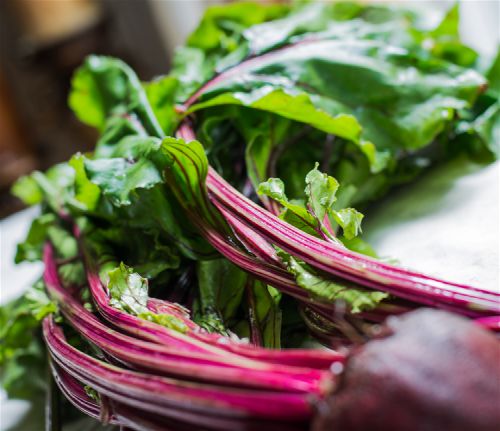
Beet greens are the best substitute for Swiss lard as they are its close relative. They are flavorful and have a good, sturdy texture. The young beet greens are the best, as they are very tender.
The difference is that beet greens have more distinctive earthy flavor than Swiss chard.
Best uses for beet greens are salads, sauces, soups.
Beet greens are very healthy to eat, especially to lower blood pressure.
Kohlrabi greens
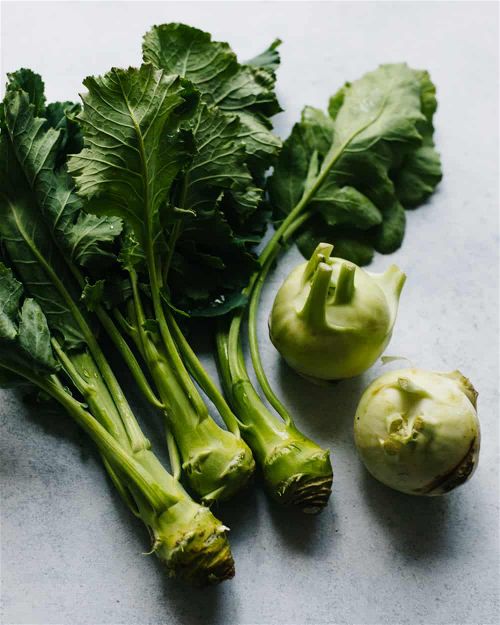
Kohlrabi greens are another greens close to Swiss chard. It tastes a little bit like radish, broccoli greens, or cooked cabbage.
You can use them raw in salads, but they are much better cooked – stir-fried, sauteed, creamed, roasted, cooked in soups, curry, smoothies, and many other dishes. You can eat young Kohlrabi greens with stems, but if they are too thick, remove them.
It is healthy to eat, especially because it contains a lot of antioxidants, but occasionally it can cause bloating.
Pumpkin greens

Pumpkin leaves are edible leaves and have similar taste to other greens with light spinach, turnip or broccoli flavor.
In fact, pumpkin is one of the zero-waste plant, as you can eat everything – the pumpkin itself, the flowers, the leaves, seeds, and stems.
Young pumpkin greens are good raw in salads and cooked in soups, stews, curries, sauteed. Some recipes can use pumpkin leaves as a wrapping material, in this case, choose mature leaves as they are tougher than younger ones.
Although pumpkin leaves are healthy, you need to moderate their consumption, as to protect themselves a pumpkin has some toxins in the leaves, which can cause toxic squash syndrome or cucurbit poisoning.
Turnip greens
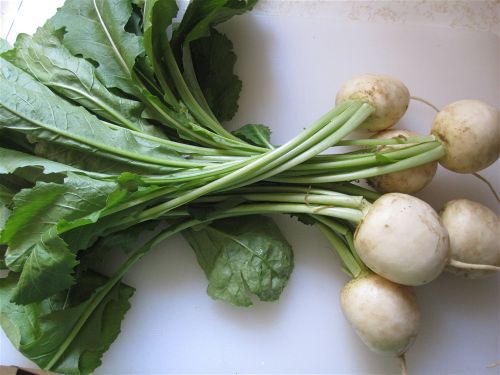
Turnip greens are actually very popular in Southern cuisine: they are traditionally served with ham hocks and salt pork. Basically, turnips are part of the same plant family as kale and broccoli, which make them substitute chard.
Turnip greens have a pungent taste, the older they get, the bitter will be the taste. Once turnip greens are cooked they become soft and milder in taste. Both stem and leaf are edible. To soothe the bitterness, you can add some sugar while cooking turnip greens.
The only precaution for cooking turnip greens is to not cook them in any aluminum cookware, as the aluminum can affect their flavor and appearance.
As all other greens they are healthy and rich in vitamin C, B6 and A, as well as fiber, magnesium, calcium, and potassium.
Kale
Kale has dark green, wrinkled leaves and it reminds cabbage. It is very close to Swiss chard, with its firm texture and delicate flavor, but Swiss chard is sweeter.
Kale is edible raw and cooked, but remove the stalks before cooking. Kale works great in salads, smoothies, sauteed dishes, soups.
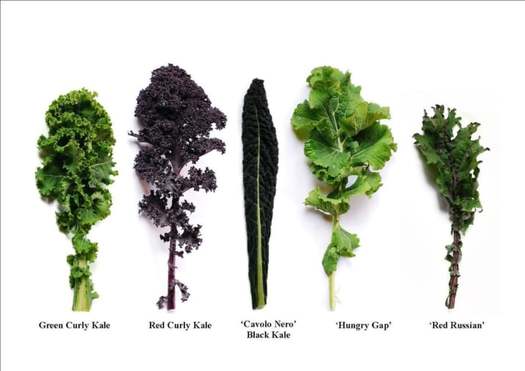
Cavolo Nero (Black Tuscan) kale
Cavolo Nero (Black Tuscan) kale or simply Black Kale, dark green leaves, that have nutty and pungent taste, which is more distinctive than Swiss chard taste.
Black Kale requires longer cooking time to become soft, but you can also eat it raw.
Cavolo Nero Kale is as healthy as Kale – rich in antioxidants, vitamins (A, C, K) and minerals.
Bok choy
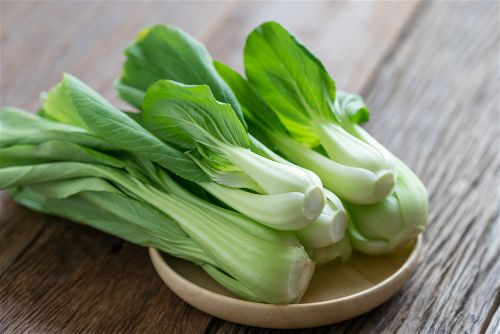
Cooked Bok choy is very similar to cooked Swiss chard. The crunchy stems of bok choy are slightly sweet.
Bok choy can be eaten in raw and cooked state, both are healthy. Eating bok choy helps with inflammation, fights cancer and heart disease.
The best way to cook bok choy is stir-fries, wonton soups, healthy bowls, and just boiled (5 min in salted water).
Collards

Collards are another low-cal, delicate in taste, leafy green vegetable (similar to broccoli and cabbage). This is a good substitute for Swiss chard.
Collards are edible raw and cooked. In fact, it needs a longer cooking time to make it tender, but cooked collards lose a bit of taste. You can use it ras in salads, wraps, and sandwiches, and cooked in soups, sauteed, braised, or simply boiled.
You normally remove stems before cooking.
Collard greens are also healthy and contains the same vitamins A, C and K.
These green leaves should be one of the favorite greens of all women, as they stimulte hair growth and improve skin state.
Calalou

Calalou or callaloo is a green plant with large leaves and also its seeds. Very popular in Asia, calalou is used in Western cuisine roasted, boiled, steamed with garlic, and served as side dish.
Calalou needs longer time to cook, as it contains a toxin called calcium oxalate, that irritates the throat. If you are cooking callaloo make sure to boil or simmer it for 45 – 60 min.
These greens are quite rare and can be expensive.
Rapini
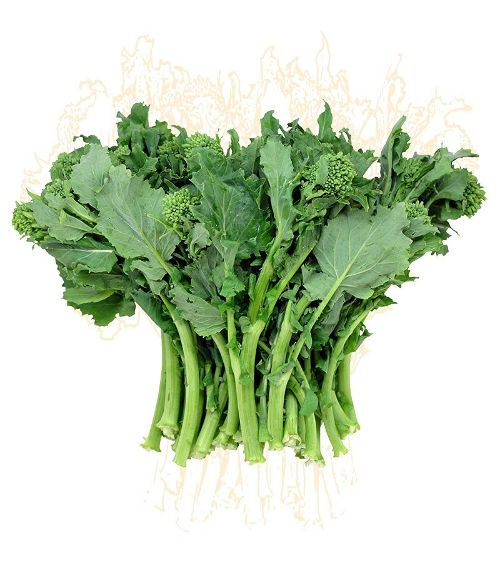
Rapini are edible greens, stems and buds of a green plant. It has more bitter taste than Swiss chard, but can still be an alternative to it.
Rapini is a relative of a well known vegetable – broccoli. Rapini can be consumed raw, but honestly, it is much better cooked – cooked rapini is tender and less bitter (add sugar, or lemon, or cream).
Rapini is also called Broccoli raab or rabe.
Escarole

Escarole has curly leaves, bitter flavor, and is part of the chicory family. The best part is the inner leaves – they are soft, mild flavor, and have a palatable texture – which makes them a great replacement for Swiss chard.
Escarole is edible both raw (in salads and sandwiches inner leaves are the best) and cooked (in soups, braised, grilled, or sautéed outer leaves).
If you’re looking for escarole at the grocery store, you may need to pay attention to spinach or lettuce, escarole looks very much like them.
Can I grow Swiss chard?
Yes, you can easily harvest your own Swiss chard: you need to put seeds in the soil, water it, and keep the soil moist. The seeds will only sprout in a sunny place.
The best season to grow it – sunny months – spring and summer. If you’re living somewhere with endless summer – you can harvest Swiss chard all around the year.
Once you think the size is ok, you can pick half of the leaves from the plant. If you’ll take all leaves, the Swiss chard will not grow new leaves.
It is a healthy and easy way to always have some greens for lunch!
